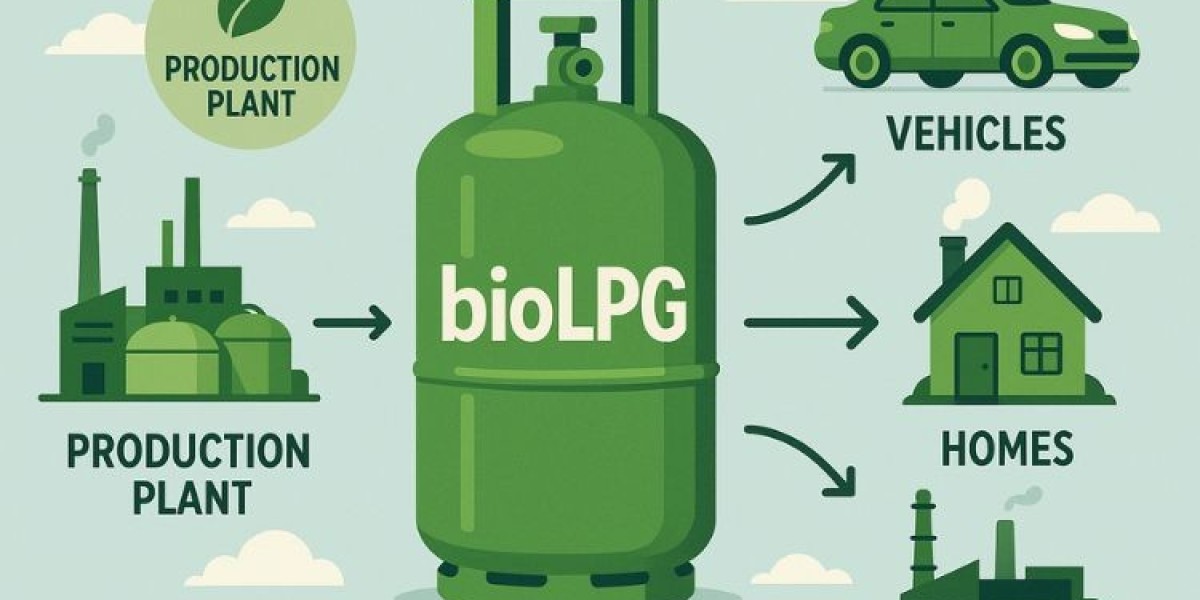BioLPG, also known as biopropane, is emerging as a critical renewable alternative to conventional LPG in Europe’s energy mix. It is produced from sustainable feedstocks such as waste oils, vegetable oils, and residues, offering a drop-in solution that can leverage the existing LPG infrastructure while helping reduce carbon emissions. In recent years, demand has accelerated as industries, households, and transport sectors look for cleaner fuels aligned with the European Union’s decarbonisation goals. The Europe Biolpg Market has already surpassed 390 KMT in 2024 and, with strong policy support and rising adoption across applications, volumes are expected to expand nearly six-fold by 2034, making BioLPG one of the fastest-growing renewable fuels in the region.
Market Segmentation by Application
Industrial
BioLPG is finding wide acceptance in industrial heating, boilers, and kilns where direct electrification is costly or impractical. Its compatibility with existing LPG systems makes it an attractive low-carbon substitute.
Transport
The transport sector, particularly commercial fleets and logistics companies, is increasingly exploring BioLPG as an alternative fuel. While electrification dominates discussions, BioLPG offers a low-carbon bridge solution for vehicles where range and infrastructure challenges remain.
Household
Residential demand continues to grow, particularly in rural areas where grid access is limited. BioLPG is widely used for heating, cooking, and water heating, enabling households to lower their carbon footprint without expensive appliance changes.
HoReCa (Hotels, Restaurants, and Cafés)
The hospitality sector is adopting BioLPG to reduce emissions in kitchens and heating systems while maintaining efficiency and convenience.
Offices and Commercial Buildings
Commercial establishments are turning to BioLPG for heating and as a backup energy source in combined heat and power (CHP) applications.
Others
Agriculture, greenhouse heating, and small-scale power generation represent additional demand areas, underscoring the flexibility of BioLPG across multiple end uses.
Regional Analysis
Western Europe: Countries such as Germany, France, and the UK are leading adoption, supported by strong renewable fuel policies and corporate decarbonisation targets.
Northern Europe: The Nordics are setting ambitious sustainability benchmarks, with pilot projects and advanced biofuel integration.
Southern Europe: Seasonal residential demand, particularly for cooking and heating, is boosting growth alongside rising HoReCa consumption.
Central and Eastern Europe: Rapidly industrialising economies are exploring BioLPG as an efficient fuel for power and manufacturing, although infrastructure development remains a challenge.
Benelux and Ports: Key import hubs play a strategic role in storage and cross-border distribution, linking producers with wider European demand.
Market Dynamics
Key Growth Drivers
Policy Support: EU climate targets and renewable energy mandates are propelling demand.
Infrastructure Compatibility: BioLPG can seamlessly replace fossil LPG in existing systems.
Feedstock Availability: Growth in biorefineries and waste-to-energy facilities boosts supply potential.
Corporate Sustainability Goals: Businesses are adopting BioLPG to meet net-zero commitments.
Challenges
Higher production costs compared to fossil LPG.
Limited dedicated production capacity across Europe.
Competition from electrification, hydrogen, and biomethane.
Regulatory fragmentation between countries.
Opportunities
Scaling up co-processing in refineries to increase BioLPG yield.
Certification and guarantee-of-origin schemes creating premium pricing.
Expansion in rural heating, hospitality, and niche transport fleets.
Integration into carbon credit and emissions trading systems.
SWOT Analysis
Strengths: Low-carbon profile, drop-in compatibility, alignment with EU climate goals.
Weaknesses: High cost premiums, dependence on feedstock availability.
Opportunities: New feedstock technologies, cross-border trading, corporate green procurement.
Threats: Substitutes like electrification and hydrogen, policy volatility, and feedstock competition with other biofuels.
Porter’s Five Forces Analysis
Threat of New Entrants: Moderate, given capital requirements but eased by co-processing opportunities.
Supplier Power: High due to feedstock scarcity and concentration.
Buyer Power: Increasing as large industrial players demand long-term supply contracts.
Threat of Substitutes: Strong from electrification and emerging hydrogen technologies.
Industry Rivalry: Intensifying among energy majors, LPG distributors, and new biofuel players.
Price Analysis
Prices for BioLPG are influenced by feedstock costs, production processes, and carbon pricing mechanisms. Premiums over fossil LPG remain, but are expected to decline as capacity scales. Certification schemes and guarantees of origin further shape pricing by allowing suppliers to charge a green premium.
Competitive Landscape
The Europe BioLPG market features a mix of established LPG distributors, major oil and energy companies transitioning to renewables, and specialized biofuel producers. Strategic initiatives include partnerships, acquisitions, and capacity expansion projects. Many players are focusing on securing feedstock supply chains and investing in certification systems to meet growing corporate demand for verified green energy.
Key Trends and Developments
Rising deployment of co-processing in refineries.
Expansion of guarantee-of-origin systems for traceability.
Increasing use of waste-based feedstocks.
Partnerships between energy majors and local distributors for broader market penetration.
Integration of BioLPG into circular economy strategies across Europe.
Future Outlook (2025–2034)
The BioLPG market in Europe is poised for rapid expansion, with demand expected to multiply several times over the next decade. While industrial and household sectors will remain dominant, growing use in transport, hospitality, and agriculture will diversify the market. Cost competitiveness and supportive policies will be key to ensuring large-scale adoption. By 2034, BioLPG is set to become a mainstream renewable fuel, contributing significantly to Europe’s net-zero ambitions.








